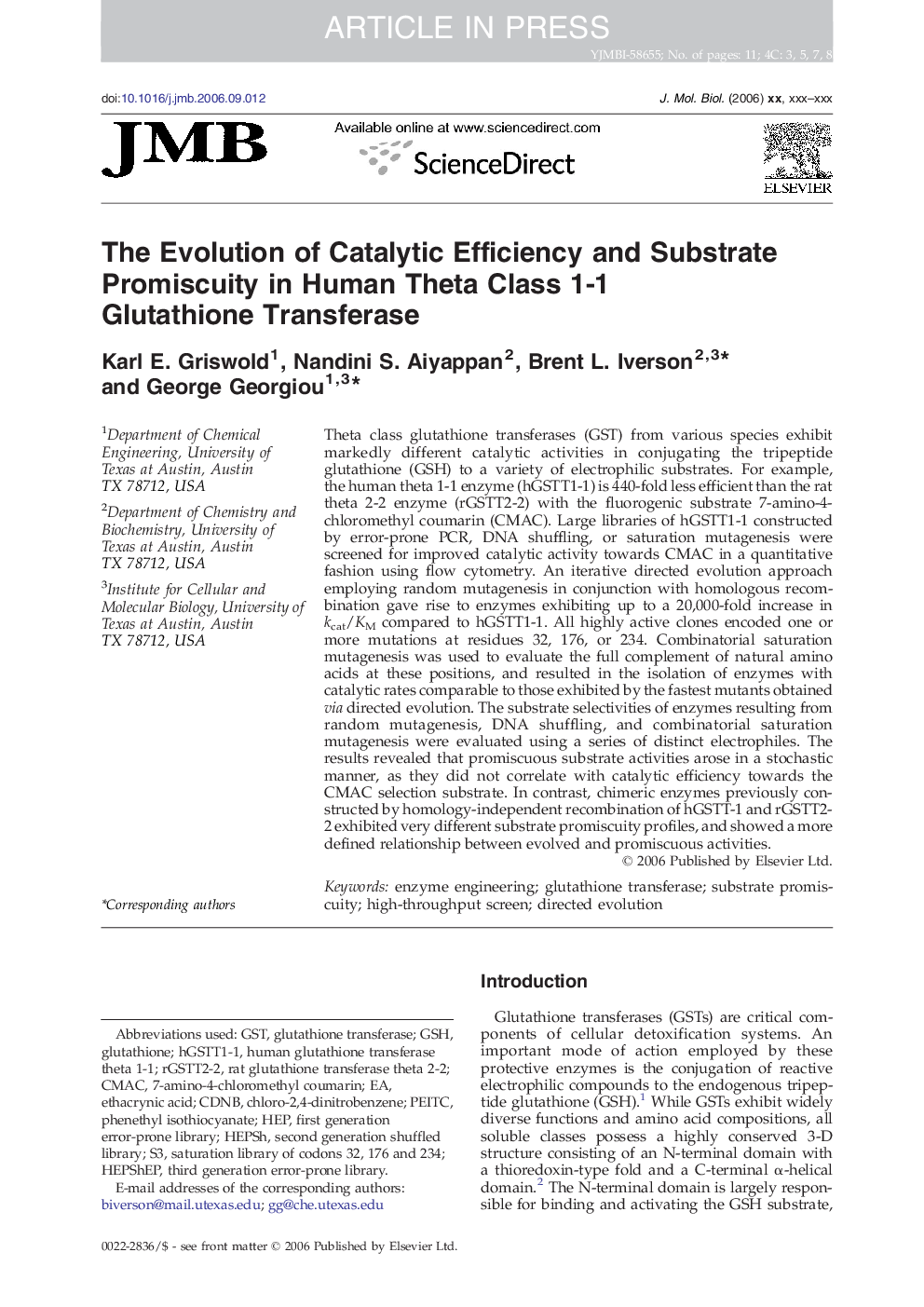| Article ID | Journal | Published Year | Pages | File Type |
|---|---|---|---|---|
| 2189341 | Journal of Molecular Biology | 2006 | 11 Pages |
Theta class glutathione transferases (GST) from various species exhibit markedly different catalytic activities in conjugating the tripeptide glutathione (GSH) to a variety of electrophilic substrates. For example, the human theta 1-1 enzyme (hGSTT1-1) is 440-fold less efficient than the rat theta 2-2 enzyme (rGSTT2-2) with the fluorogenic substrate 7-amino-4-chloromethyl coumarin (CMAC). Large libraries of hGSTT1-1 constructed by error-prone PCR, DNA shuffling, or saturation mutagenesis were screened for improved catalytic activity towards CMAC in a quantitative fashion using flow cytometry. An iterative directed evolution approach employing random mutagenesis in conjunction with homologous recombination gave rise to enzymes exhibiting up to a 20,000-fold increase in kcat/KM compared to hGSTT1-1. All highly active clones encoded one or more mutations at residues 32, 176, or 234. Combinatorial saturation mutagenesis was used to evaluate the full complement of natural amino acids at these positions, and resulted in the isolation of enzymes with catalytic rates comparable to those exhibited by the fastest mutants obtained via directed evolution. The substrate selectivities of enzymes resulting from random mutagenesis, DNA shuffling, and combinatorial saturation mutagenesis were evaluated using a series of distinct electrophiles. The results revealed that promiscuous substrate activities arose in a stochastic manner, as they did not correlate with catalytic efficiency towards the CMAC selection substrate. In contrast, chimeric enzymes previously constructed by homology-independent recombination of hGSTT-1 and rGSTT2-2 exhibited very different substrate promiscuity profiles, and showed a more defined relationship between evolved and promiscuous activities.
